#Ronald Reagan Presidential Library
Explore tagged Tumblr posts
Text


#OnThisDay in 1981 Sesame Street LIVE performed at the Thanksgiving Party at the White House.
Photos Courtesy of the Ronald Reagan Presidential Library
#Sesame Street#Thanksgiving#On This Day#National Archives#Ronald Reagan Presidential Library#White House#History
129 notes
·
View notes
Note
Have you ever written a letter to a president and got a response?
I've been a Presidential history nerd since I was a little kid. I don't know when I first became interested in the Presidents or what specifically piqued that interest, but I know that I can't remember a time where it wasn't something I wanted to learn everything I could possible learn about it. So when we'd go to the school library in elementary school, my friends would check out age-appropriate kids books and I would check out full-fledged Presidential biographies.
So, yes, I absolutely wrote letters to Presidents and I still have some of the responses I received. As a kid, I sent a letter to the White House whenever there was a new President because I never forgot what happened the first time I wrote to a President. I was probably 7 or 8 years old and back when the phone companies would publish yellow pages and white pages, they would have sections with contact information for government officials. I saw that there was an address for the White House (1600 Pennsylvania Ave NW), so I wrote a letter to President Reagan. I have no idea what I wrote at the time, but I remember that I got a big envelope from the White House with a little note written on fancy paper with the Presidential seal and a signed photo of the President, as well as a little booklet about the White House. I don't have that first letter from Reagan, but after he left office, I had learned about the Presidential Libraries and the fact that former Presidents had post-Presidential offices. I wrote to former President Reagan at his office in Los Angeles and received pretty much the same thing I had been sent while he was still in office. I do still have that:

I wrote to President George H.W. Bush and President Clinton when they were in the White House, too. President Bush sent a letter and photo and President Clinton sent a photo:

Those were the last incumbent Presidents that I wrote to while they were in the White House. I turned 13 years old when President Clinton took office in 1993 (and I mean that literally -- believe it or not, my birthday is Inauguration Day) and while I was still interested in Presidential history, I was also interested in girls, so I kind of grew out of the letter-writing. But when I was a teenager, I did also write to former Presidents Gerald Ford and Jimmy Carter at their post-Presidential offices. Sadly, I didn't get around to writing to former President Nixon before he died in 1994, so I never received anything from him. I regret that I didn't write to him in time because that's around the time I wrote to former Presidents Ford and Carter.
But President Ford and President Carter really made my nerdy letter writing all worthwhile. The letters and photos I received from President Reagan, President Bush, and President Clinton were all signed by an auto-pen, as you would expect for someone responding to as much mail as the President of the United States does.
However, President Ford and President Carter sent me photos with their actual autographs! I remember Ford sent some packets of information about himself and a copy of an interview where he answered a bunch of questions about stuff that kids might be interested in. Carter also sent something like that, as well as a folder with information about the Carter Center and the work it does around the world. But the coolest thing to receive were the photos with their genuine autographs on them. I took advantage of that and actually wrote to President Ford several times when I was a teenager (I don't know why I seem to have written to President Carter only once) in hopes that his office would send me more autographs and they did!

Looking back, I wish I never would have grown out of writing letters to Presidents because those are all really cool little souvenirs, especially for a Presidential history fanatic. It would have been fun to have similar things from other Presidents. But if you have a kid or if you are a kid (if you are a kid, I sure hope you have parental permission to read my blog because I say bad words sometimes) with interest in the Presidents/Presidential history, it's really fun to write to the President or former President and get something back. At one point, you could just drop a letter in the mail addressed to "THE PRESIDENT, Washington, D.C.) and it would be delivered to the incumbent in the White House, but I'm not sure if they do that anymore. But it's super easy to find the mailing address to the White House or to the post-Presidential offices of former Presidents online. Presidents and former Presidents have franking privileges, so it's also cool to get a big envelope with a President's signature in the place of stamps. If you're a teacher of younger kids who are learning about the Presidents or Presidency, it's also a cool little project to do. When I was running afterschool programs many (way too many) years ago, I did that with my students and they all received photos from the President at the time (George W. Bush), along with a letter that was addressed to the entire group as a whole.
#History#Presidents#Presidential History#Presidency#Ronald Reagan#President Reagan#George H.W. Bush#President Bush#Bush 41#Bill Clinton#President Clinton#Gerald Ford#Gerald R. Ford#President Ford#Jimmy Carter#President Carter#Presidential Autographs#Presidential Signatures#Presidential Letters#Letters to Presidents#Post-Presidency#Presidential Libraries#POTUS#Presidential Souvenirs#White House#White House History
33 notes
·
View notes
Text
I went to the Nixon and Reagan Presidential Library and Museums today!
I have a migraine from reading in the car so I'm not going to write a lot.
Nixon. I love his signature anime girlie pose :)
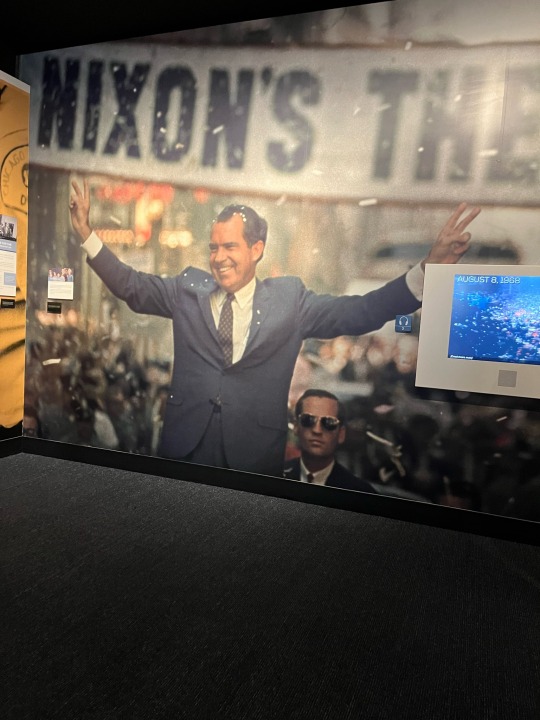
WOOF WOOF
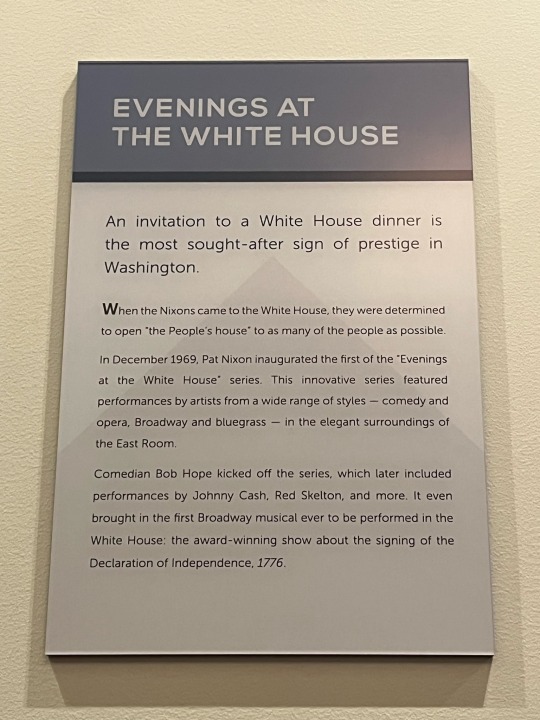
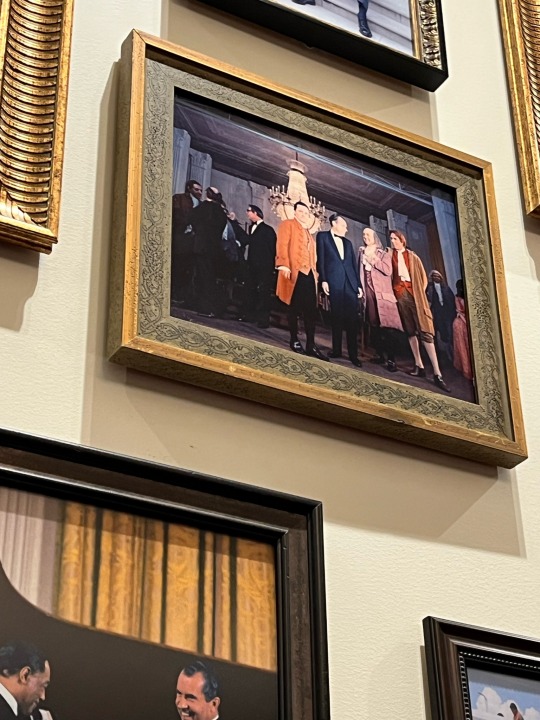
THE JASON HEUSER PAINTING IN THE CORNER

I can now say that I am a Richard Nixon fan, he's just silly. The intro video actually called him a loser since he's always lose before he won 😭
Reagan
NOOOO NOT CUSTER 🤢🤮

It's still so cool that Reagan acted and was even President of the Actor's Guild.
President fandom:

MARX 'S THUMBS-UP IS SO FUNNY. Teach your kids about the wonders of communism RIGHT NOW. 👍
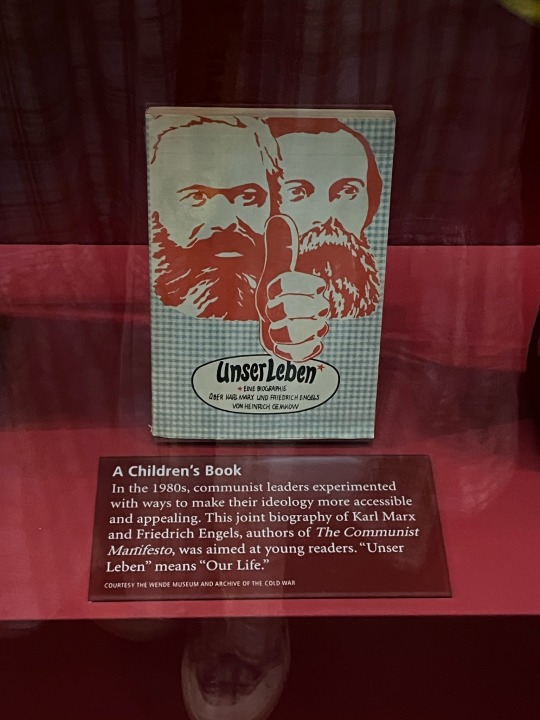
Horse :)

the glare is horrendous...BEAN PORTRAIT
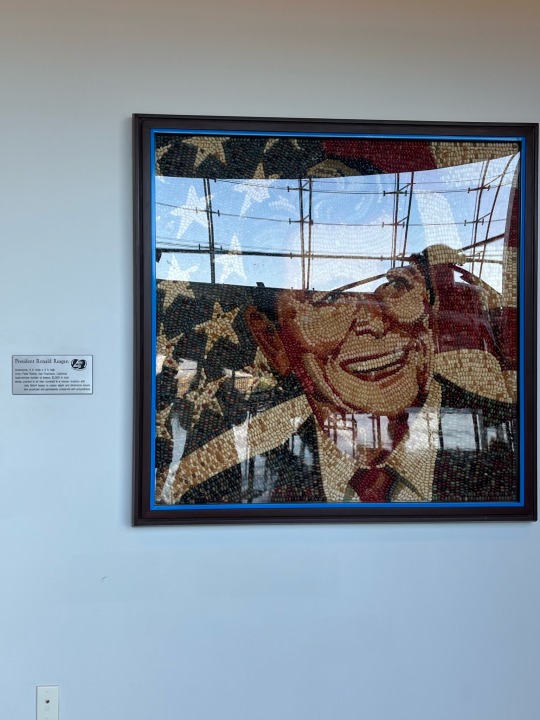
*😐 among us WHOHMP tat tat tat* uh....

#historical museum#us president#us presidents#museum#richard nixon#ronald reagan#presidential library#presidential libraries#1776 musical
22 notes
·
View notes
Text

President George HW Bush, with former Presidents Ronald Reagan, Jimmy Carter, Gerald Ford and Richard Nixon, at the dedication of the Ronald Reagan Presidential Library in Simi Valley, California - November 6, 1991.
#jimmy carter#george hw bush#ronald reagan#gerald ford#richard nixon#potus#presidents of the united states#black and white photography#1991#1990s#reagan presidential library#simi valley#california#cold war presidents#american politics#american history
0 notes
Text
The William J. Clinton Presidential Library
TRAVEL THERE – ANOTHER PRIMARILY PRESIDENTIAL DESTINATION If you follow my tags, you’ll find 19 posts about Primarily Presidential Destinations. I’ve got at least that many more on my wish list. The William J. Clinton Presidential Library was not on that list, but that’s only because I hadn’t really thought about it. I’d never been much of a fan and Little Rock was not someplace I was dying to…

View On WordPress
#Attraction Review#George W. Bush Presidential Library and Museum#HIllary Rodham Clinton#Jane Sadek#Lifestyle Blog#President Bush#President Clinton#Primarily Presidential Destinations#Road Trip Blog#Ronald Reagan. Ronald Reagan Presidential Library#Travel Blog#Travel There#William J Clinton Presidential Library
0 notes
Text
As of around roughly 2AM, Fox News has called the 2024 presidential election for Donald J. Trump.
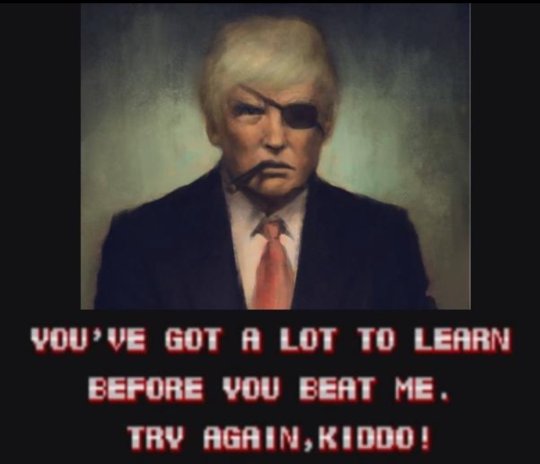
Every lawsuit, every felony charge, every cry of authoritarianism, every deplatforming, every newsroom choosing to embrace "moral clarity," every book thrown out of a library, every firing, every peaceful protest and every riot, every empty campaign slogan, every hope for a permanent majority – all of them have failed.
Cultivate strength. Respect agency. Seek mastery. Only a man who bends to reality more than he bends to social consensus can possibly hope to defeat him now. Live. Survive. Once every blue state is a hub of meta-rational excellence, the envy of every European social democracy, this man's grasp will be broken, and you will escape the shadow of the new Ronald Reagan.
What do you think - are you a bad enough dude to out-govern the President?
#election 2024#politics#flagpost#melodramatic mysticism#img src turrible_tao on X#the bird website#donald j trump
51 notes
·
View notes
Note
Go on about the universe thing please (if you wish), I’m interested
The moment I have been waiting for... 😈😈
Disclaimer: everything in this post is part of a fictional world, IT IS NOT REAL!!! (well except for me, I'm real ☹️☹️) AND WARNING, KIND OF CRINGE...
So, this universe starts with me (yes, I'm the "main character", very cringe I know). I was (NOT AM) 10, with an emerging interest in history. All of the sudden, I gain powers? (So cringe bro). These powers allowed me to do a lot of things, except give myself immortality and many other things that would make me a "Mary Sue" lmao (a Mary Sue is a character with no flaws and/or is extremely overpowered I believe). These powers were inspired by Creator Luni, a character in a game I used to play religiously: Gacha World 😭😭😭. Basically a floating pad that I tap on to do/make whatever I want.
The character in question:

Ok anyways... So since I found out that I could revive as many people as I wanted (except for people who died when they were under 18), I got an idea: REVIVE THE UNITED STATES PRESIDENTS!!! Why? Because 10 year old me (BTW I AM NOT 10 RIGHT NOW.) wanted to get to know the country's former leaders (kinda stupid reason but hey it's whatever). How did I do it? On the 22nd of August, I teleported to each and every presidents gravesite at exactly 12AM, somehow get to the graves that were blocked off, block off cameras (if there were any cameras), and do the "ritual". (WARNING FOR BLOOD HERE) There's only three things you need for a revival ritual: your own blood, a pan to dip your hand palm first into the blood (it doesn't need to be a pan) and bandages to cover the wound. That sounds very weird, I know 😭 (And also, I learned about this "ritual" beforehand). This is how I did it: I used my powers to sharpen my fingernails into literal claws and cut my left arm to get some blood into the pan (btw the cut wasn't huge, just enough to be able to make a bloody handprint). I put my hand into the pan and then slapped my BLOODY HANDPRINT onto the name on the gravestone/coffin of every president. But, I left a tiny vial of my blood at Lincoln's tomb in the burial room(?), because I wanted to be found out. After the handprint is placed on the gravestone/coffin, it CANNOT be washed off and it will manifest for 12 hours after it is placed. After it is done manifesting, the handprint will dissapear. Since I did it at 12AM, they all came back to life at 12PM. (Joanna, if you wanted to be found out, why did you block the cameras? Well, I didn't want to be seen, but found out through the blood test.)
When every president woke up, they either woke up above their grave, or in their coffin in which they could easily open in nothing but a white robe. Since these gravesites and presidential libraries are open to the public, many people witnessed a former president spawn out of thin air in front of their own eyes.
Another thing about reviving a person is that these revivals can have side effects. These side effects are what's known as a "resurrection aftereffect" This can alter the resurrected person's physical and/or emotional functions and/or features, it can be a drastic or small change. The only president that was affected by this just so happened to be Franklin Pierce, but I will talk about the changes later. I learned about these prior to reviving the presidents, and I wondered WHICH ONES would be affected. When I found out they were revived, I sent the clothes they wore to them in a matter of seconds, so they wouldn't be stuck in a white robe. Three other things about my powers is that I can alter the age in which they come back in. In other words, I can choose which age they would be when resurrected, and they will be stuck at that age physically and mentally, but they would still retain memories from after the age they are stuck in. For example, Ronald Reagan died at 93 years old, when I brought him back, I changed his age to 75. The other thing is that I can remove diseases, STDs, and any other physical problem that a person had (NOT INCLUDING MENTAL DISORDERS AND/OR ILLNESSES). So in this universe, FDR CAN WALK (although he may need to regain the ability to do so) AND JFK DOESN'T HAVE TO WORRY ABOUT BACK PROBLEMS AND OTHER DISEASES HE HAD???!!!?!????!? (And also, I can restore their teeth, so Washington no longer has dentures... 😈😈) The last thing is that when I age, I receive more abilities.
As expected, Lincoln found the vial I left that had a note on it "Send to a lab for testing", he definitely doesn't know what a lab is, so he just held onto it for now. When the president at the time, Donald Trump, caught wind of the news, he ordered a meeting of the former presidents. He sent government officials to go get the other presidents via transportation (obviously lol). Some of them were transported via car or the LITERAL PRESIDENT'S AIR FORCE ONE (or um the president's personal plane) because yknow Ronnie is literally in California. After all of the presidents were taken to the White House, they held the meeting. This meeting talked about where the former presidents would reside, and a myriad of other things. During this meeting, Lincoln presented the vial of my blood because he had no idea what to do with it lol. It was taken to a lab for testing. They concluded that the presidents would reside in the White House (which would require a bit of renovations I think lol), but they would not engage in the political affairs of today, unless ABSOLUTELY necessary.
A few weeks later, the test results came back. When they saw who it was, Donald ordered the government officials to come and take me to the White House for "questioning" or an interrogation, if you will. When they arrived at my house, my parents were obviously confused as to why they were here. They told them that they were sent by the president to get me, but assured them that I wasn't in trouble and showed my parents proof that they were legit officials. But before I left, I wanted to pack some things.
When I got to Washington D.C, I was taken into the White House. First, I was taken to meet the presidents. When they saw me, most of them were very bewildered. Some just stared at me, the others talked amongst themselves. All of them but Pierce (once again, I will get to this soon). They were very confused as to how and why a 10 year old girl brought them all back to life. After all of that, I was taken to a room for questioning. The officials and Trump asked me a myriad of questions, but I may need some help with coming up with the exact questions, as I am going to write a document going into more detail about this universe (Doodle, I'm looking at you... 👀👀).
Anyways, after this, the news of who was behind the revivals came out to the public. So I basically became a celebrity! Because of this, I wanted to make content on YouTube, but I had to get my parents to manage the channel for me. I wanted to choose 3 presidents to come onto the channel with me and record videos, whether it be informative or purely comical! The three presidents I chose were: Abraham Lincoln (He's one of the BEST presidents, no really!), Thomas Jefferson (because I did research about the dude, and I wanted to know MORE!), and Franklin Pierce (he interested me the second I found out about his existence, which was online and before the revivals, AND because of the resurrection aftereffects).
I informed all of the presidents about the important things that happened after they died (like WW1, WW2, 9/11, etc. And I'd teach the prezzes that died before the civil war happened about it too lol).
Now... LET'S TALK ABOUT THE EFFECTS PIERCE WENT THROUGH... 😈😈😈 Firstly, Franklin lost his ability to properly express emotion (his facial expression is literally blank, it was like he couldn't move his face to express emotion, but he could still speak. He can move his face, but can't express emotion somehow.). Secondly, his voice became void of ANY tone that would convey any sort of feelings. His voice sounded freakishly similar to a robot, it was still deep though. But CERTAIN tones (like when you ask a question) are still present. And lastly (this one is a small, physical change), his tongue grew longer??? (huh???????).
And most of the time, except for the videos, he'd avoid me, especially when I try to make a "friendly advance" (like an arm hug or smth). I initially didn't know why, but it WASN'T because he didn't like me and after I turned 12, he started avoiding me less (The reason as to why Pierce avoided me was because he believed he was cursed, and if we made an entirely platonic, emotional bond, I would die before December 19th, which is my birthday. But specifically December 19th, 2021 in which I turned 12. I have a WIP document going into full detail of the specific event btw lol).
There are other notable events, that I haven't written about YET.. 😈😈 Anyways, later on, I added two more presidents to the main group (John F. Kennedy, and Ronald Reagan!). And some time in early or late 2024, I bring PHINEAS GAGE INTO ALL OF THIS?????? (I started developing an interest in him, and then ended up reviving him. 😰😰😰😰😰)
And yes, I do face a bit of scrutiny for reviving them, because MOST of them weren't the best people (it's not my fault man, I knew little to NOTHING about them prior to this😢😢)... But I'm not gonna ignore it, being ignorant is NOT good when it comes to these types of topics (slavery, and other stuff 😰)... And don't worry, I end up "fixing" most of them (like changing their view on people that aren't white like them because being racist is the equivalent of being a LOSER lmao).
Wow, that took a bit to jot down (I didn't do this all in one day LOL)... Whatever though, it was (probably) worth it... 😈🧐 I can't believe I have finally released this universe for the entirety of Tumblr to see. 😰😰
This is what autism does to a person...
#lol#us presidents#u.s. presidents#us history#a universe that I have in my head... lol#I've kept it secret for years#until now... 😈😈😈#franklin pierce#franklinpierce#abraham lincoln#thomas jefferson#john f kennedy#ronald reagan#phineas gage#hehe#sigh.....#this is so cringe.....#msachillelaurosfunnels yapping session
16 notes
·
View notes
Text
Kelley Beaucar Vlahos
Nov 29, 2024
The new Department of Government Efficiency (DOGE) should seriously consider the National Endowment for Democracy (NED) for its high priority list of federal cost cutting measures in 2025.
It’s not only a sinkhole of American taxpayer dollars—over $1 billion in congressional appropriations from 2020, 2021, 2022 to 2023—but NED’s mission to “promote freedom around the world" has over the decades translated into countless cases of counterproductive meddling that puts truly organic “people-powered” movements at risk by fomenting regime change and revolution for Washington’s political aims and purposes.
“If [Elon] Musk and [Vivek] Ramaswamy are really serious about this idea of taking a hatchet to government spending, they should do so by starting with the programs that are most detrimental to the world and U.S. interests and are least likely to hurt ordinary Americans when cut,” said Jacobin’s Branko Marcetic, who wrote about NED when the first Trump administration slashed the organization’s budget. The Washington establishment greeted that move with the ritual gnashing of teeth and rending of clothes over the “assault” on democracy.
“On balance,” Marcetic told The American Conservative, “the NED has been a detrimental force that would not be missed if it disappeared tomorrow.”
The quasi-government agency—“quasi” meaning that it is technically an independent non-profit but it gets the greater part of its funding by far from annual government grants—was first instituted in 1983 to make overt the covert programs of the CIA in foreign countries. This isn’t some anti-imperialist smear, as NED has tried to suggest. Records from the Ronald Reagan Presidential Library archives show it was the brainchild of then-CIA Director William Casey and William Raymond Jr., who worked for the CIA’s propaganda office before moving to the National Security Council.
10 notes
·
View notes
Text
I have no clue if I ever made an intro post, so here's a comprehensive invitation to get to know me.
My name is Marvin, but I also go by Thomas or Kevin. I'm in the 16-20 range, but I am not comfortable sharing the exact age for internet paranoia reasons. I've been a Tumblr user since 2019, but I accidentally deleted my first account somehow.
My main interests include but are not limited to:
American History
Broadway musicals
Fall Out Boy
Panic! at the Disco
Andrew Rannells media (TNN, BM, BoM, Falsettos, Pokemon Live!, HATAI, Trolls 3, Hairspray, A Simple Favor, TBITB) (I got into him in 2017 through Pokemon Live!)
Politics
Theology
The main presidents I'm interested in are:
George Washington
John Adams
Thomas Jefferson
James Madison
James Monroe
John Quincy Adams
Andrew Jackson
Martin Van Buren
John F. Kennedy
Ronald Reagan
Bill Clinton (met December 2024)
The main musicals I'm interested in are:
Falsettos
Book of Mormon
In Trousers
RENT
Clinton the Musical
Bloody Bloody Andrew Jackson
1776
A New Brain
American Psycho the Musical
Gutenberg!
Beetlejuice
Hairspray
Way more that I don't have the time to name... I've watched 47 musicals.
I'm obsessed with American Psycho (All Media Types).
Ships:
Van Jackson
Jedams
Clayhoun
Clintongore
BILLARY
Candytree
Jamilton
Jeffmads
NewSantis
Autism, ADHD, GAD, OCD, and Bipolar I diagnosed. The point is that I have no social skills. Woohoo!
Saw Hamilton on tour (2-25-25)
Saw Bill Clinton in person (12-9-24)
Clinton Presidential Library x2
Visiting the Hermitage this summer
4 notes
·
View notes
Text
In the summer of 2015, back when he was still talking to traitorous reporters like me, I spent extended stretches with Donald Trump. He was in the early phase of his first campaign for president, though he had quickly made himself the inescapable figure of that race—as he would in pretty much every Republican contest since. We would hop around his various clubs, buildings, holding rooms, limos, planes, golf carts, and mob scenes, Trump disgorging his usual bluster, slander, flattery, and obvious lies. The diatribes were exhausting and disjointed. But I was struck by one theme that Trump kept pounding on over and over: that he was used to dealing with “brutal, vicious killers”—by which he meant his fellow ruthless operators in showbiz, real estate, casinos, and other big-boy industries. In contrast, he told me, politicians are saps and weaklings. “I will roll over them,” he boasted, referring to the flaccid field of Republican challengers he was about to debate at the Ronald Reagan Presidential Library that September. They were “puppets,” “not strong people.” He welcomed their contempt, he told me, because that would make his turning them into supplicants all the more humiliating. “They might speak badly about me now, but they won’t later,” Trump said. They like to say they are “public servants,” he added, his voice dripping with derision at the word servant. But they would eventually submit to him and fear him. They would “evolve,” as they say in politics. “It will be very easy; I can make them evolve,” Trump told me. “They will evolve.” Like most people who’d been around politics for a while, I was dubious. And wrong. They evolved. “I’ve never seen anything like it,” Trump told me the following spring, as he was completing his romp to the 2016 nomination. We were talking on the phone, and Trump had just wrapped up a rally in Anaheim, California. Former Texas Governor Rick Perry had recently endorsed him, despite dismissing Trump earlier as a “cancer on conservatism” and “a barking carnival act.” “He made a statement saying something like I’m ‘the smartest guy ever to run for office,’ ” Trump told me (Perry didn’t say exactly that, but close). “How do you get from ‘cancer on the party’ to that? I get it, I get it; it’s how politicians are. But I couldn’t do that.” Trump accepted Perry’s support, and then promptly taunted him. “He was going [around] saying the worst things about me!” Trump said at the Anaheim rally. “I have never seen people able to pivot like politicians.” “It’s happening with all of them,” Trump said. “Lindsey Graham just called and was very nice … even though he used to say the worst things.” (Graham had called Trump, among other not-nice things, “a race-baiting, xenophobic religious bigot” and “a kook.”) Soon enough, the last holdouts would come around too. “It’s just so easy, how they do that,” Trump said. As went individual Republican politicians, so went the party. Reince Priebus, the chair of the Republican National Committee in 2016, would become frustrated with Trump over his obvious scorn for his organization. Still, Priebus would gamely try to assure me that the GOP was shaped not by one man but rather by a set of traditions, principles, and conservative ideals. “The party defines the party,” Priebus kept telling me. After Trump won the nomination in 2016, “The party defines the party” became a familiar feckless refrain among the GOP’s putative leaders. House Speaker Paul Ryan vowed to me that he would “protect conservatism from being disfigured.” Senate Majority Leader Mitch McConnell told the radio host Hugh Hewitt that “Trump is not going to change the institution,” referring to the GOP. “He’s not going to change the basic philosophy of the party.” In retrospect, this was hilarious.
6 notes
·
View notes
Text




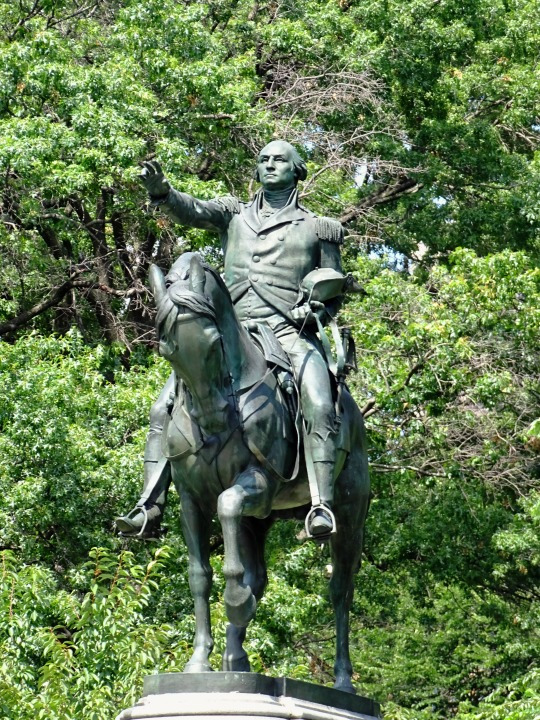
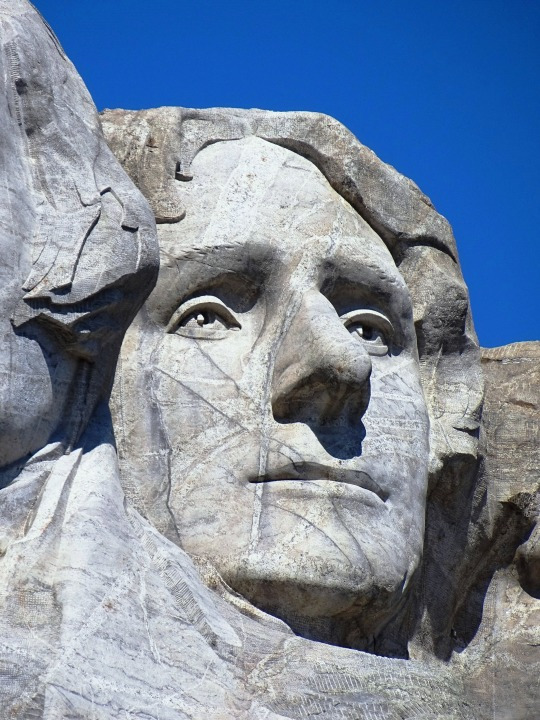
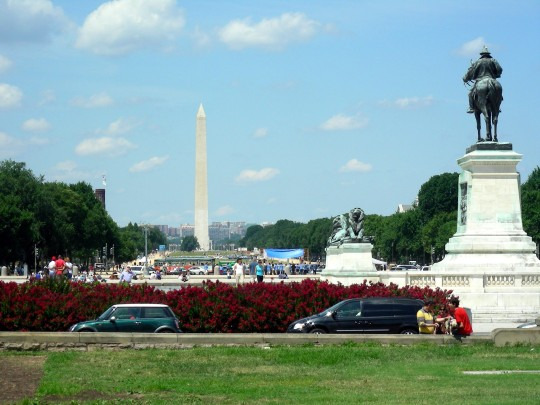
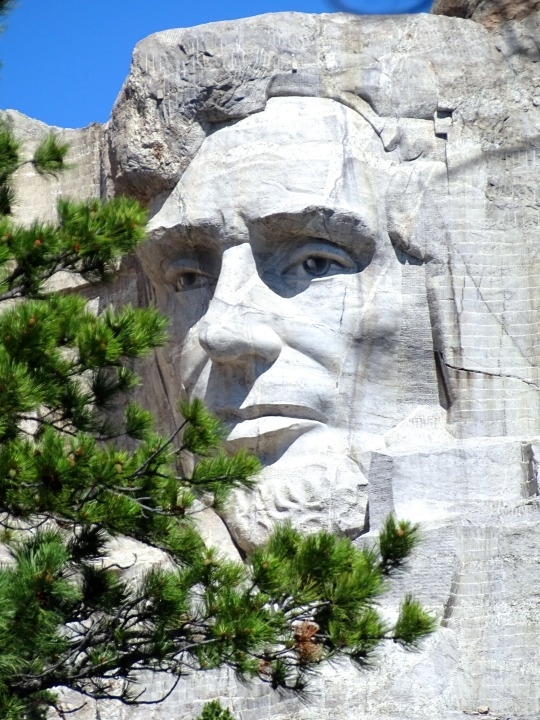

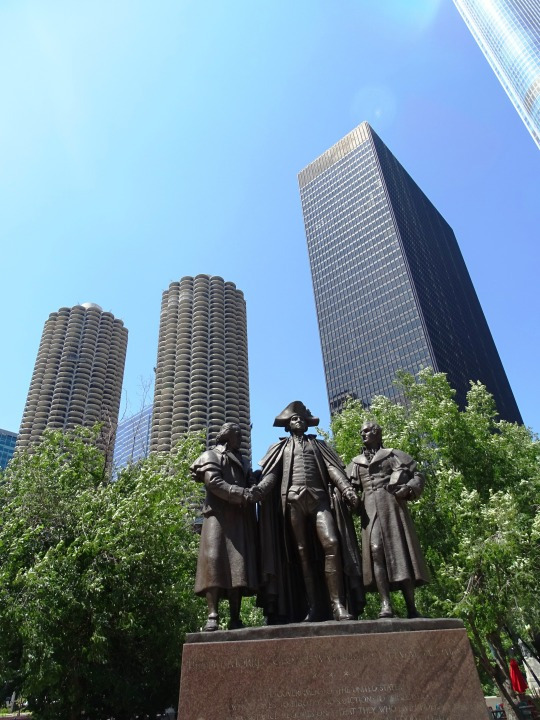







Presidents’ Day
Celebrated each year, on the third Monday in February, Presidents’ Day is a federal holiday to pay tribute to the presidents of the United States, including George Washington, the country’s first president, and Abraham Lincoln, who served during the Civil War. The holiday was originally established to honor Washington, but over time it has come to be a day to recognize all of the nation’s presidents. It is a day when many businesses and government offices are closed and people have the day off from work or school. Some people celebrate Presidents’ Day by participating in parades or other events, while others use it as a time to relax and spend time with family and friends.
History of Presidents’ Day
Presidents’ Day has its roots in the celebration of George Washington’s birthday, which has been observed as a national holiday in the United States since the late 18th century. Washington was born on February 22, 1732, and his birthday was first officially recognized as a national holiday by an act of Congress in 1879. The holiday was originally called “Washington’s Birthday,” and it was observed on February 22 each year.
In the 20th century, Congress passed the Uniform Monday Holiday Act, which was designed to create more three-day weekends for the nation’s workers by moving several holidays to Mondays. As part of this act, the holiday honoring Washington was moved to the third Monday in February and was renamed “Presidents’ Day” to recognize not just Washington, but all of the presidents of the United States. The holiday has been observed on the third Monday in February since 1971.
Presidents’ Day is not only a time to honor US presidents, but also a time to reflect on the important role that they have played in shaping the nation’s history.
How to Celebrate Presidents’ Day
There are many ways to celebrate Presidents’ Day. Some people choose to honor the holiday by taking part in parades or other events that are held in honor of the presidents. Others use the day as an opportunity to learn more about the presidents and their contributions to the country. Here are a few ideas for celebrating Presidents’ Day:
Attend a Parade, or Visit a Presidential Museum or Library
Many cities and towns hold parades on Presidents’ Day to celebrate the presidents of the USA. Look for one in your area and join in the celebration. There are also many museums and libraries dedicated to the presidents of the United States.
Read a Book About a President
There are many books available about US presidents. Consider reading one of these to learn more about a particular president or the history of the presidency:
Washington: A Life by Ron Chernow. This Pulitzer Prize-winning biography provides an honest portrait of George Washington, the man who became the United States’ first president.
Team of Rivals: The Political Genius of Abraham Lincoln by Doris Kearns Goodwin. This book chronicles the life and presidency of Abraham Lincoln, focusing on his ability to lead and manage a diverse group of advisors and cabinet members.
John F. Kennedy: A Biography by Michael O’Brien. A comprehensive biography of JFK, examining the life and legacy of the 35th president, from his childhood and education to his assassination in 1963.
The Reagan Diaries edited by Douglas Brinkley. A collection of diary entries written by President Ronald Reagan during his two terms in office, this book provides a unique, behind-the-scenes look at the Reagan presidency.
Barack Obama: The Story by David Maraniss. Offering a detailed and nuanced portrait of Barack Obama, the 44th president of the United States, it covers Obama’s early life, political career, and presidency, and offers insight into the man and his leadership style.
Watch a Movie or Documentary
There are many films and documentaries about US presidents, but here’s a few to get you started:
Lincoln (2012) – A biographical drama that stars Daniel Day-Lewis as Abraham Lincoln, the 16th president of the United States. It focuses on Lincoln’s role in the abolition of slavery and the passage of the 13th Amendment to the Constitution.
Truman (1995) – Starring Gary Sinise as the 33rd president of the United States, Harry S. Truman, the film covers Truman’s life, career, and presidency, including his role in the dropping of the atomic bombs on Japan and the Korean War.
JFK (1991) – A biographical drama starring Kevin Costner as President John F. Kennedy, this film examines the events leading up to Kennedy’s assassination and the investigations that followed.
Nixon (1995) – Stars Anthony Hopkins as President Richard Nixon. The film covers Nixon’s political career, the Watergate scandal and his eventual resignation from office.
The President (2019) – A documentary profiling President Barack Obama, covering his life, career, and presidency.
Participate in a Service Project
Presidents’ Day is a good time to think about ways to serve your community. Consider participating in a service project or volunteering your time to help others.
Source
#John Adams#John F. Kennedy#Presidents’ Day#George Washington#Mount Rushmore National Memorial#controversy#South Dakota#17 February 2025#third Monday in February#PresidentsDay#original photography#tourist attraction#landscape#cityscape#Theodore Roosevelt#Thomas Jefferson#Abraham Lincoln#Gutzon Borglum#President Millard Fillmore by Bryant Baker#Buffalo#New York#President Grover Cleveland by Bryant Baker#Washington DC#Ulysses S. Grant Memorial by Edward Pearce Casey#USA#New York City#travel#vacation#landmark#architecture
2 notes
·
View notes
Text
2 notes
·
View notes
Note
If Harris is elected will she be the only president other than reagan born in California
Reagan was Governor of California and lived here most of his adult life, but he was born in Illinois.
The only President born in California was Richard Nixon. You can still visit the home he was born and raised in, which is on the grounds of the excellent @richardnixonlibrary in Yorba Linda (which is in Orange County). You can actually start at Nixon's birthplace, walk through the Nixon Library, and end your tour at Nixon's gravesite. It's an incredible way to experience someone's life story. I can't give a high enough recommendation to the Nixon Library, and they also have arguably the best Tumblr site of any of the Presidential Libraries.
Kamala Harris would be the second California-born President and first Democrat.
#Presidents#Presidential History#Ronald Reagan#President Reagan#Richard Nixon#President Nixon#Kamala Harris#Vice President Harris#California#@richardnixonlibrary#richardnixonlibrary#Richard Nixon Presidential Library and Museum
29 notes
·
View notes
Text
What an embarrassing 💩 show. Nothing serious, no policies, no answers, just juvenile swipes and name calling.
7 notes
·
View notes
Text
“Does anybody see a V.P. in that group? I don’t think so,” joked Donald Trump as he was speaking in Michigan before the Republican presidential debate. As far as Trump and many others are concerned, the contest for the Republican presidential nomination is already over and he can dismiss the entire GOP field as political nobodies. As his seven remaining Republican challengers gathered at the Ronald Reagan Library in Simi, California, Trump was near Detroit addressing auto workers in a non-union plant just one day after President Biden appeared on a picket line near Bellville, Michigan with unionized autoworkers, all members of the United Auto Workers (UAW). Inveighing against President Biden’s electric vehicle mandate, he proclaimed that in a Trump administration, gas vehicles will be allowed and sex change operations for minors will be banned.
It’s not hard to understand why the president and the former president made back-to-back appearances in Michigan. In 2016, Trump won Michigan by 11,000 votes on his way to a shocking upset victory over Hillary Clinton. In 2020, Biden took back the state by 154,000 votes, and union workers made a big difference. Biden got 62% of their vote in 2020, compared to just 53% for Clinton four years earlier.
The struggle between Democrats and Republicans over the working-class vote is a story that stretches back more than half a century. From the New Deal through the mid-1960s, these Americans formed the heart of the Democratic coalition, whose string of victories was interrupted only by a war hero, Dwight Eisenhower, who was courted by both parties. But after Lyndon B. Johnson’s landslide victory in 1964, discord over the Vietnam War, race, and the counterculture began to divide college educated and non-college Democrats. Unlike more upscale Democrats, white working-class voters supported the war, opposed the counterculture, and opposed racial integration when it seemed to threaten their neighborhoods, schools, and jobs.
Republicans exploited these divisions with robust appeals to patriotism and “traditional values” and by opposing affirmative action in hiring. After Ronald Reagan’s landslide victory over Walter Mondale in 1984, Democrats could no longer ignore their waning appeal to the white working class. In a study commissioned by the Michigan Democratic Party and financed primarily by the UAW, Stanley Greenberg, a public opinion expert and political analyst questioned focus groups in Macomb County, a working-class suburb of Detroit where Democratic voters had shifted extensively to the Republican column.
Greenberg’s findings triggered an intense debate among Democrats and led to efforts to elevate economic interests shared by white and Black voters over race-specific appeals. Bill Clinton rode this new strategy to victory over incumbent president George H. W. Bush in 1992 and an 8-point reelection victory in 1996, recovering a significant share of white working-class voters from the Republicans while retaining supermajorities of Black Americans.
For the next two decades, Republican candidates competed for white working-class voters predominantly with cultural appeals while retaining a pro-business economic agenda focused on tax and spending cuts—including reduced outlays for Social Security and Medicare. For their part, Democrats focused on economics, defending the large entitlement programs and charging that the Republicans’ plans for taxing and spending favored wealthy individuals and big business.
Trump’s insurgent 2016 campaign brushed aside the Reagan-Bush conservatism on his populist-style march to the Republican nomination. Trump claimed to be the only true defender of working-class interests and values, denouncing globalization, “unfair” trade deals, and China’s rise, which he argued had come at the expense of American workers. In the famous “down the escalator” speech announcing his candidacy, he insisted that Social Security, Medicare, and Medicaid needed to be saved without any cuts to beneficiaries. As president, Trump worked to retain his position as the working-class champion by drawing back from international economic institutions, pursuing a more protectionist strategy on trade, and denouncing Chinese exports as an assault on American workers. Democrats were thrown on the defensive, backing away from policies such as the Trans-Pacific Partnership that President Obama had advocated for.
The nomination of Joe Biden, who had long styled himself as the defender of the working class and of organized labor, represented the Democrats’ recognition of the changed landscape. Biden deemphasized trade treaties, pushed for “Buy American” policies in federal programs, and embraced an industrial strategy designed, as he often stated, to “create millions of high-paying union jobs right here in the USA.” This shift undergirded the increased working-class support that helped him accomplish in 2020 what Hillary Clinton could not in 2016.
This history set the stage for the clash between Biden and Trump in Michigan this week. More than a year before the general election, Trump and Biden have begun their campaign, with Biden aligning himself with the UAW leader’s attack on “corporate greed” and Trump proclaiming that Biden’s electric vehicle (EV) mandate would destroy autoworkers’ jobs and “assassinate” the U.S. automotive industry. EVs, Trump proclaimed, don’t travel far enough, cost too much, and are mostly made in China. He told the autoworkers that Biden is selling them out to the “radical environmentalists” and that their negotiations with the Big 3 automakers were meaningless if their leadership didn’t oppose the EV mandate. If the mandate persists, he predicted, their jobs will disappear and all the EVs will be made in China.
Rather than imposing mandates and regulations on our domestic auto production, Trump ticked off the accomplishments on trade during his presidency and promised what he termed “patriotic protectionism”—a new 10% across-the-board tariff—and what he termed “reciprocal tariffs” to match the barriers imposed by other countries. He offered a vision of American-made cars running on fossil fuels produced in America, a future in which American manufacturing is restored to what it was decades ago, where the gleaming factories and humming assembly lines are in the U.S. and the rusting factories are overseas.
While Trump was starting the general election, seven Republicans were on stage in California fighting for the Republican nomination. They didn’t seem to know that the race was over. Trump leads the Republican field in every poll, pulling off the amazing feat of increasing his lead even as an unprecedented number of indictments rolled in and his reputation as a brilliant businessman and his business itself was destroyed by a judge in New York.
So, what were those seven Republicans doing onstage?
Hoping for lightning to strike. If you read today’s polls, their collective stance sounds ridiculous, but the history of nomination races says not so fast. In a nomination race, one of the most dangerous positions to be in is “front-runner.” That’s because in the early stage of the nomination race, before many delegates are actually awarded, “winning” is defined by “winning” the expectations game and front-runners can run afoul of “expectations.”
A bit of history shows what could happen. In 1984, former Vice President Walter Mondale was running for the Democratic nomination. He was considered by most to be the front-runner and in the first contest, the Iowa caucuses, he garnered a substantial vote. It was so big, in fact, that the next day, the New York Times declared, “The magnitude of Mr. Mondale’s lead, however, also underscored predictions that no one would be able to stop him if he won a majority or near- majority victory over a crowded field.”
But what happened next is a warning to front-runners everywhere in every decade. The second-place candidate was a young, largely unknown U.S. Senator from Colorado, Gary Hart. He had no organization, no money, and no national name recognition save having been George McGovern’s campaign manager 12 years earlier. And yet it was Hart, not Mondale, who came out of Iowa like a shot and won the New Hampshire primary eight days later on the strength of momentum alone. And while he didn’t end up winning the nomination, he gave Mondale a run for his money all the way to the last primary.
So, what were all those candidates doing on stage? Trying to be Gary Hart or, in other words, trying to be the number two candidate who can go one-on-one with Trump. Nationally, Trump runs about 42 points ahead of the rest of the field, but in New Hampshire, he runs about 31% ahead of the rest of the field. In the early states, the voters are beginning to be engaged and tell pollsters they are open to alternatives.
The second Republican debate showed some signs of a nomination race that is maturing. The first sign is that they have figured out how to criticize Trump. With one solitary exception, it became clear that no one was going to touch Trump’s many indictments and the day’s ruling on fraud in his business empire with a 10-foot pole. However, they did criticize Trump’s record. The lead critic, former New Jersey Governor Chris Christie, said, “Trump, you’re afraid of being on this stage tonight, not because of the polls, not because of the indictments, but because you can’t defend your record.” Florida Governor Ron DeSantis accused Biden of being missing in action on the shutdown talks and then added, “You know who else is? Donald Trump. He should be here tonight.” And former South Carolina governor Nikki Haley accused Trump of being wrong on China, reciting a long list of policies that Trump did not focus on.
But with Trump not being present, they spent the bulk of their airtime attacking each other. It was clear that Haley wanted to send Vivek Ramaswamy to the corner—continually interrupting him and criticizing him for his dealings with China and TikTok. Senator Tim Scott (and former Vice President Mike Pence) rolled out some opposition research on Vivek Ramaswamy supposedly making money from business dealings in China. Pence attacked DeSantis for his spending in Florida, Haley attacked DeSantis for his energy policies and Scott for his lack of executive experience.
The two people who no one attacked were the Governor of North Dakota, Doug Burgum, and former Vice President Pence. Burgum kept trying to convince the audience that his experience as a business leader was key, but on the same day Trump was unveiled as more con artist than business leader, it was probably not the best time for that argument. Pence kept talking about his experience for the office, taking both of us back to 1984 when we worked for former Vice President Mondale. It didn’t work so well then, and it probably won’t work so well today. If no one criticizes you, it may be because they don’t think you’re a threat.
Debates don’t correlate exactly to votes, but they do give the voter a sense of how the candidates make their case. And, as the second Republican debate made clear, the battle for second place is on. We don’t know yet who may emerge as the alternative to Trump, although Haley is making a strong bid for that scenario. But last night’s debate showed that the GOP field understands that, for the time being, their real enemy is not Trump but one another, and the task over the next few months will be deciding who confronts Trump if the race becomes a one-on-one match against the former president. Whether that battle will center on Trump’s indictments, experience, or governing record will decide if there is a “Gary Hart” in this field or if Trump will romp untouched to the GOP nomination.
2 notes
·
View notes
Text
The second Republican primary debate, set for September 27 at 9 p.m. EST at the Ronald Reagan Presidential Library, features prominent candidates like DeSantis, Scott, Pence, and Haley. It can be watched on FOX Business, Univision, or the exclusive RNC livestream on Rumble. Trump will not participate. #GOPDebate #2024Election #RepublicanCandidates.
2 notes
·
View notes